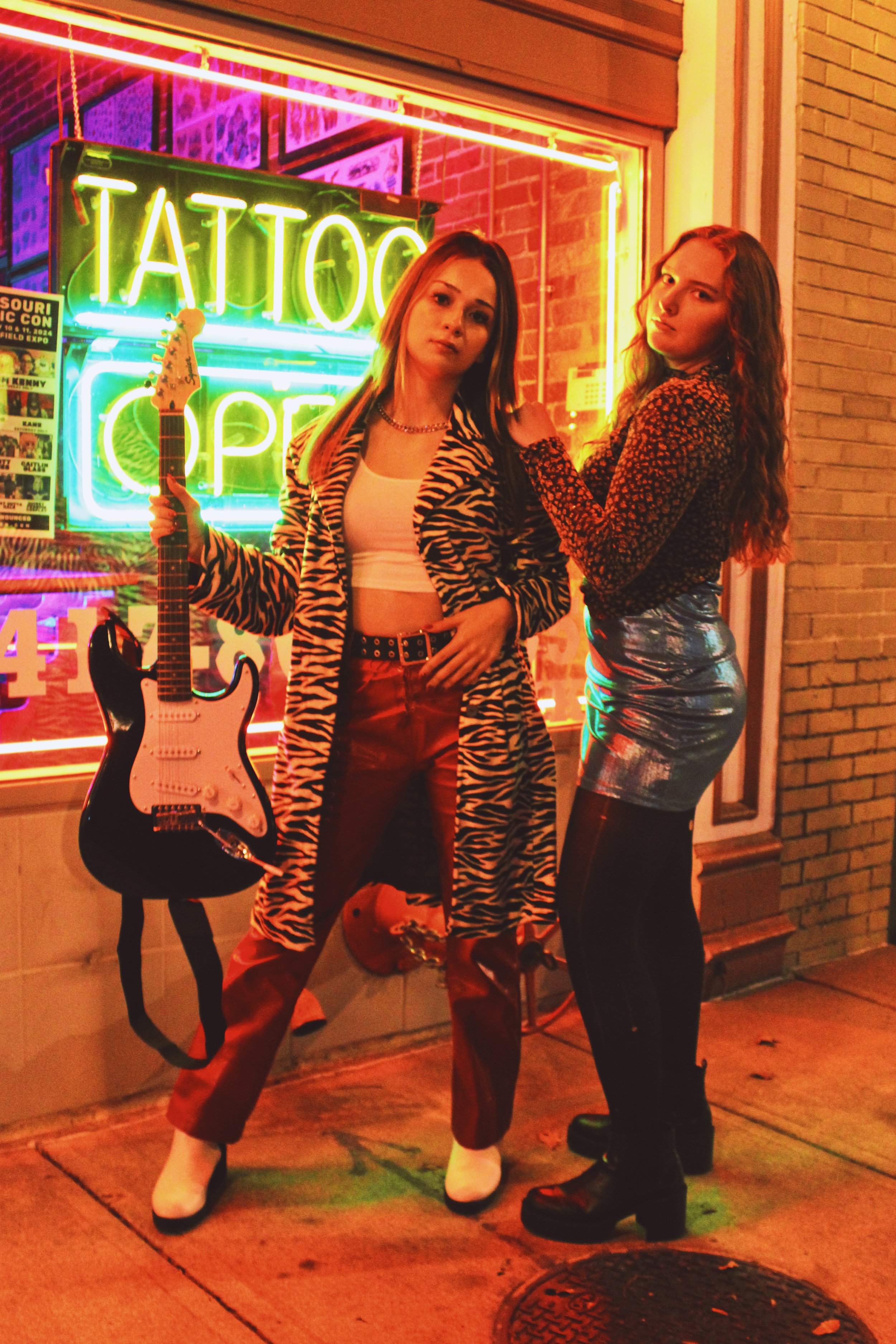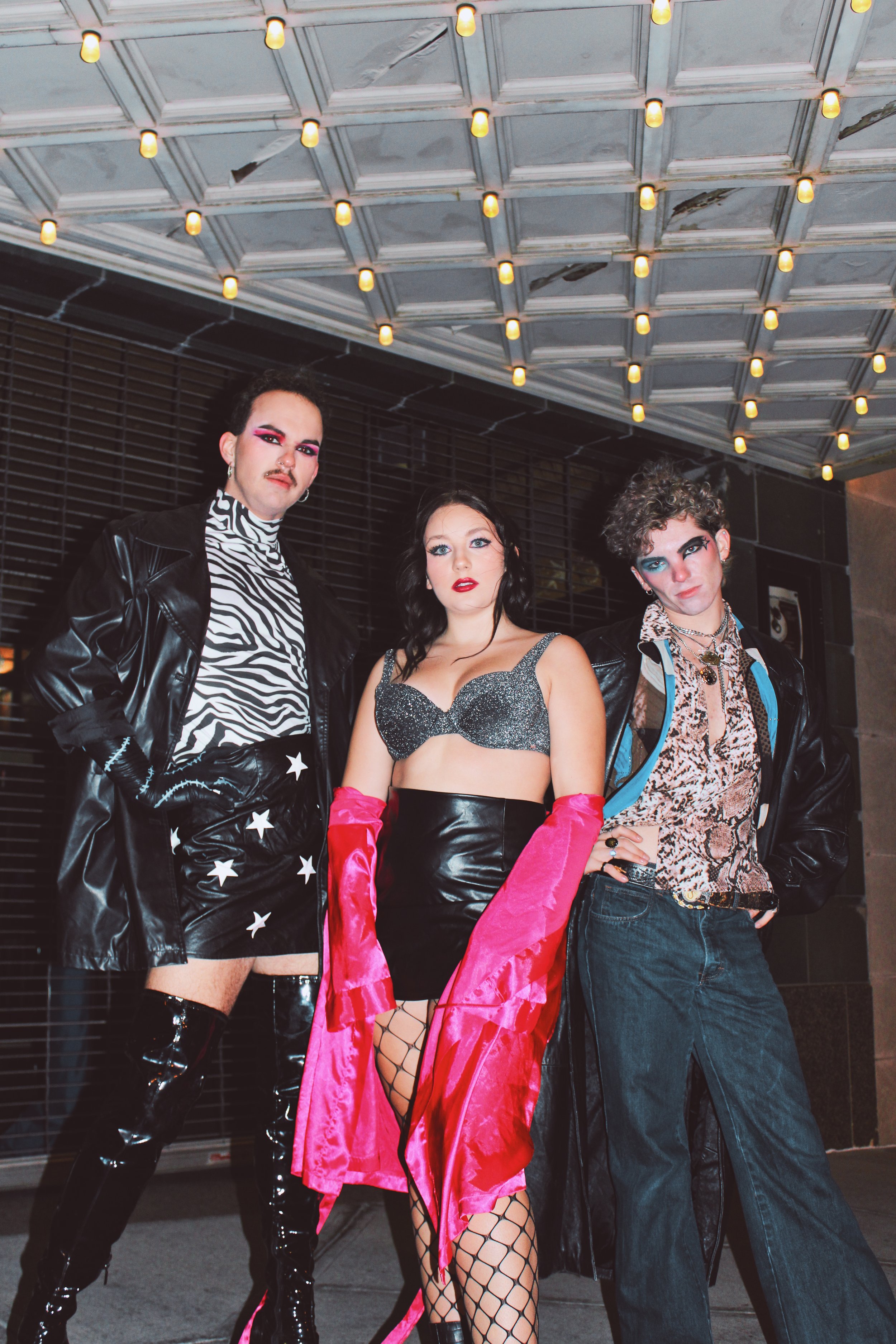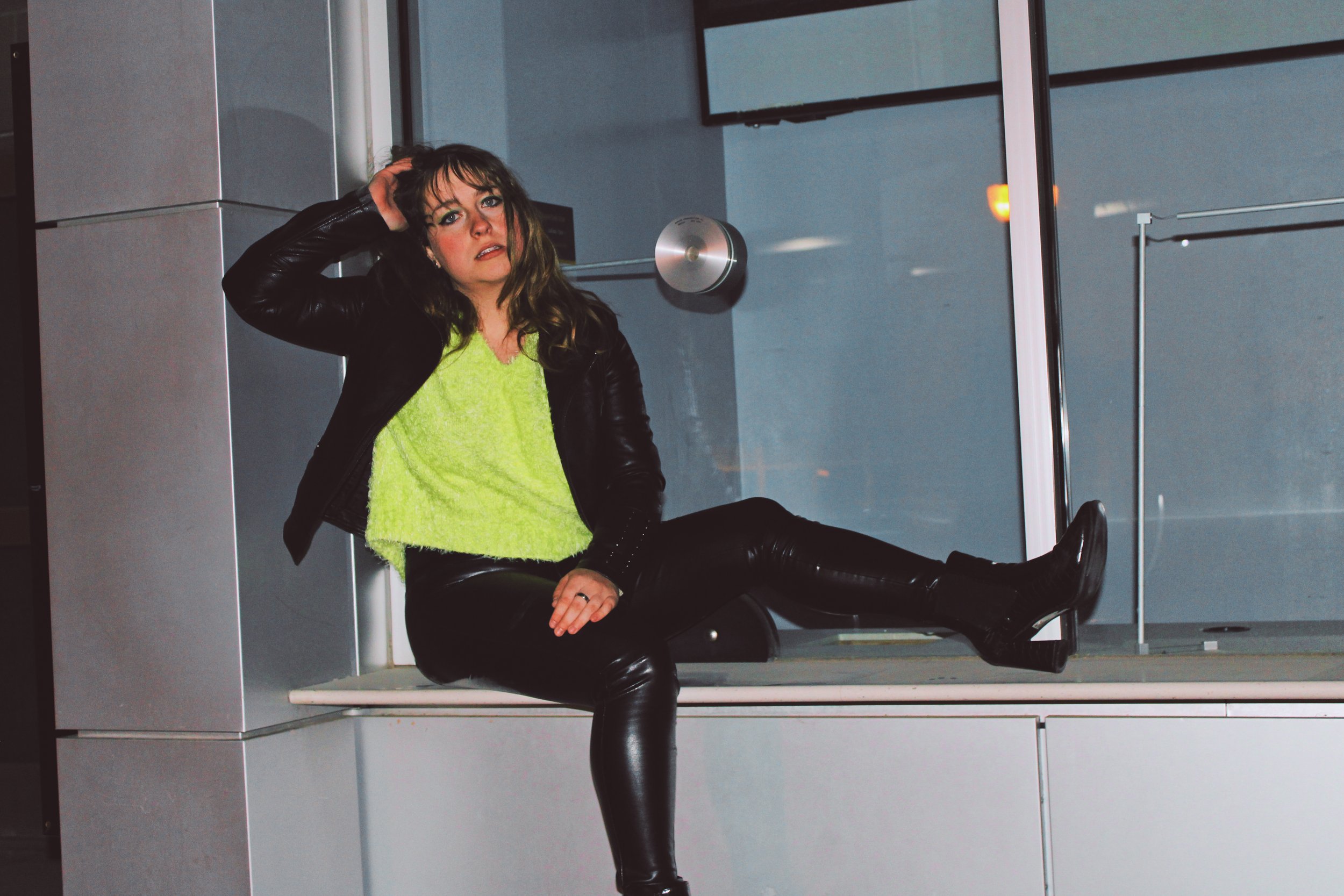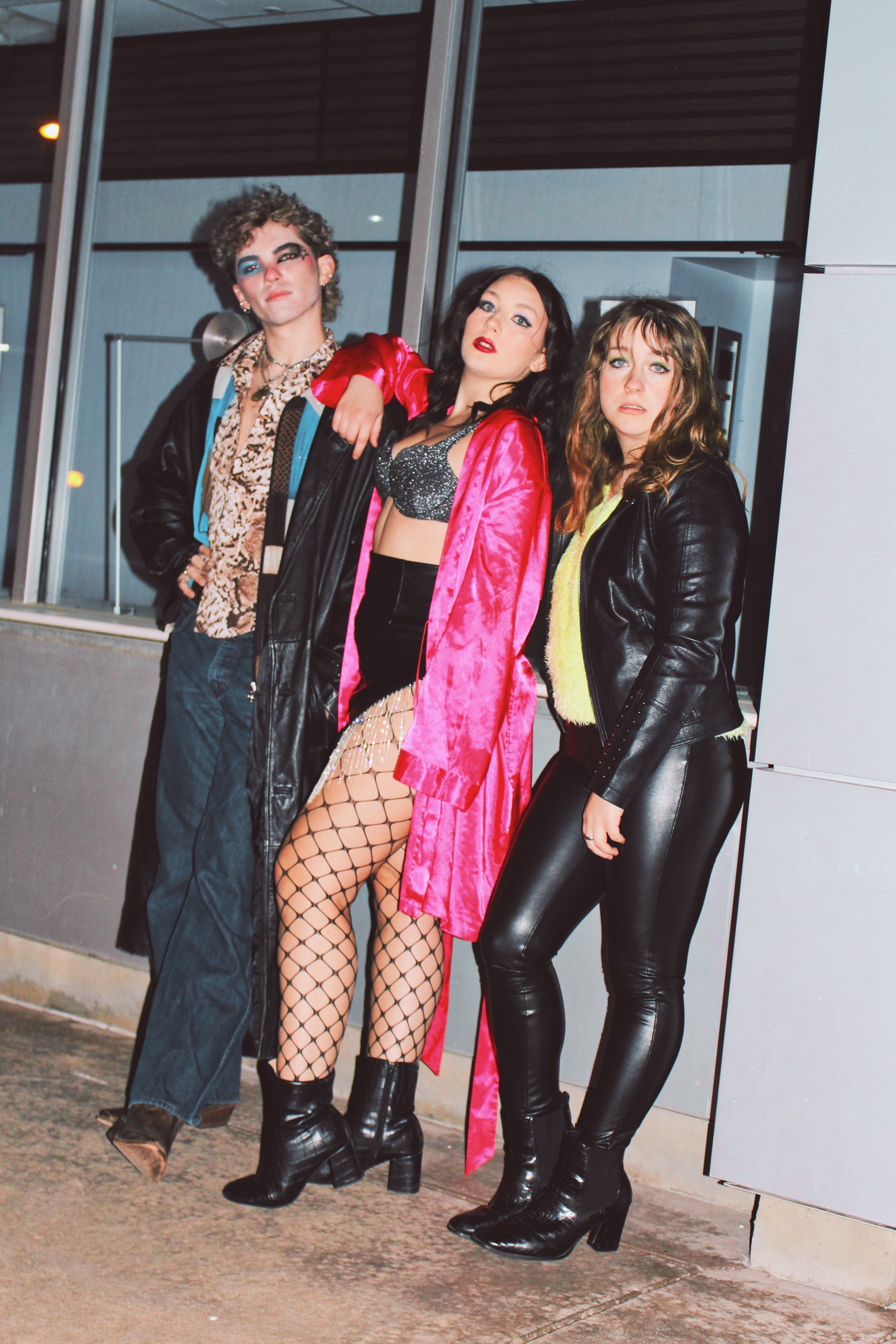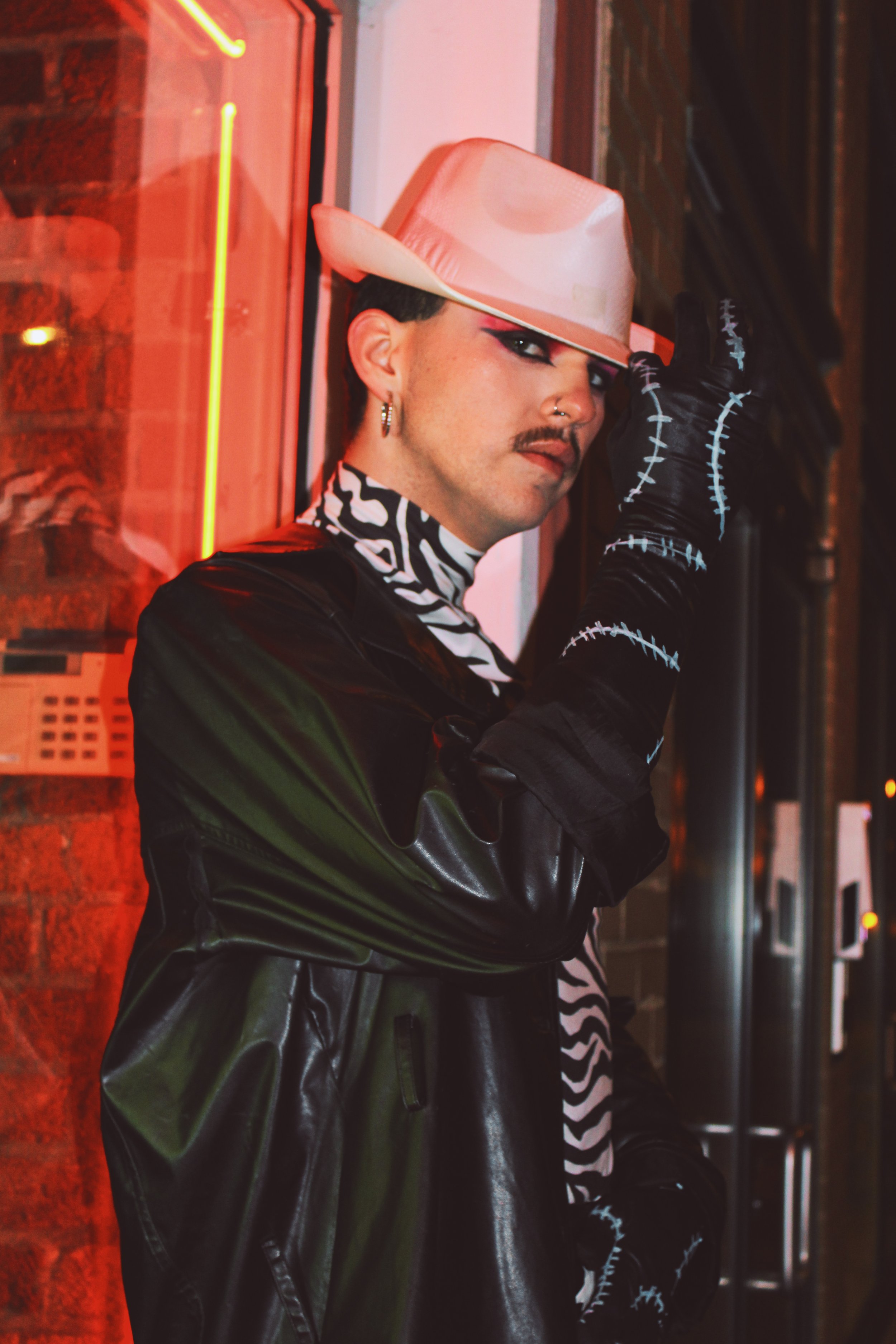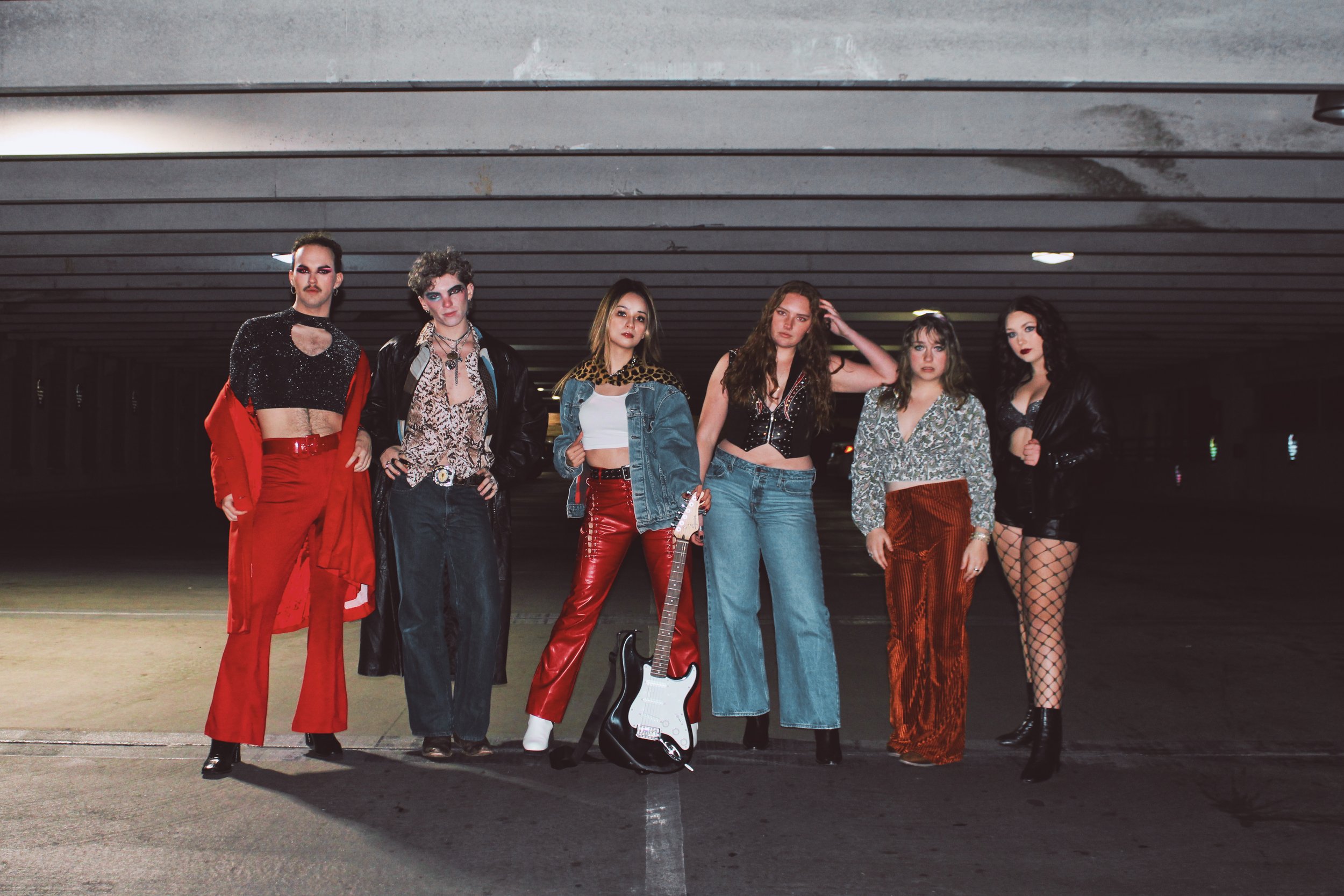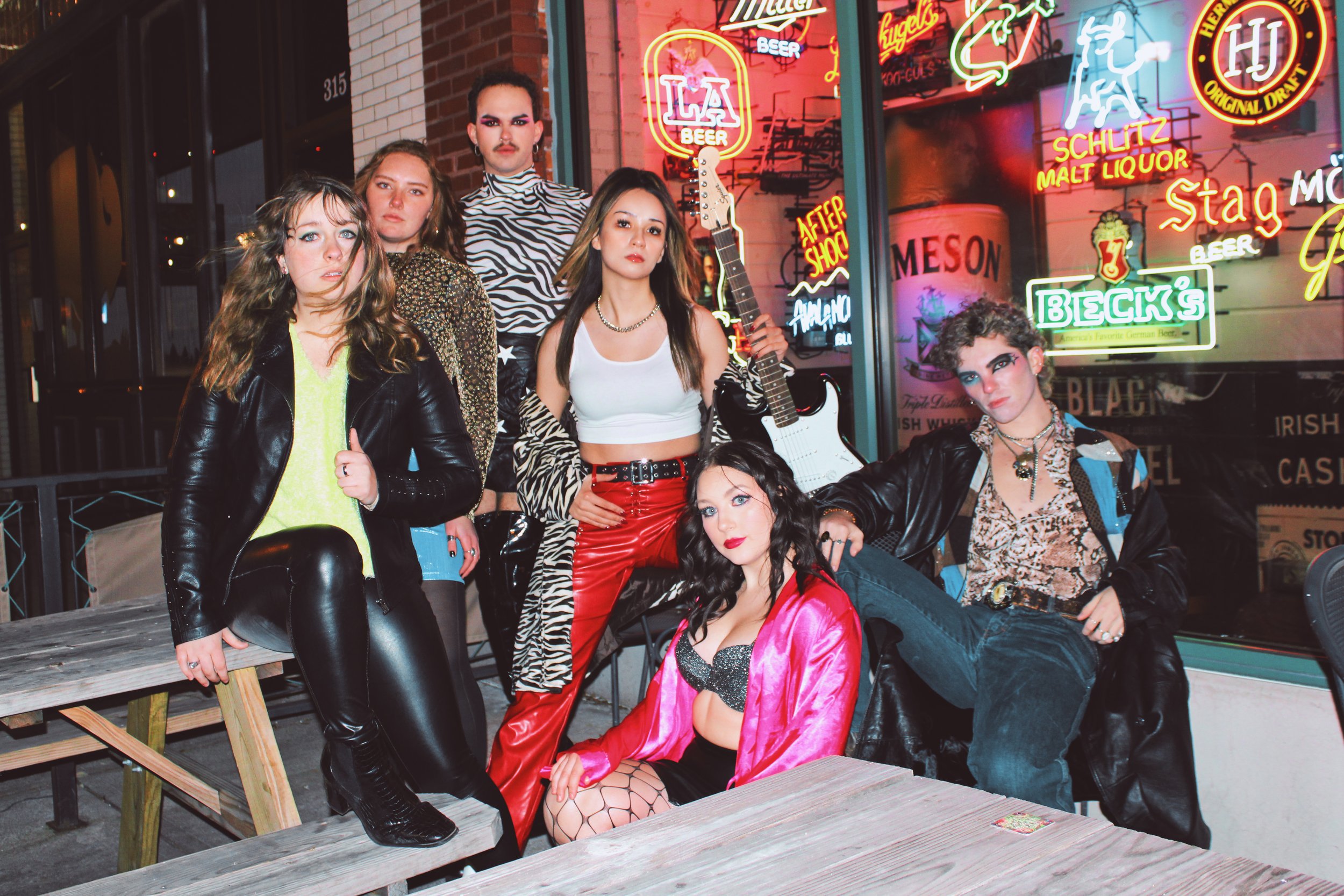Glam Rock: Now and Then
Written By Alyssa Roney
Directed By Hadley Berry
Modeled By Hadley Berry, Cole Vest, Emily Mettlach, Alyssa Roney, Chloe Holt, & Sierra Ball
Photography By Britney Spangenberg
From the start of the 21st century to the time of this article’s publishing, the chasm between the present age and the 1970s will have widened exponentially. We have become postmodern, and a brick wall may as well separate “post” from “modern.” This same wall divides our world from the world of our parents and grandparents. Their ways have become too antiquated for our bolder, brighter world. We seek to isolate the more charming aspects of this past, i.e., fashion, while discarding what we deem too problematic.
What we often neglect to realize, though, is that the fashion statements serving as blueprints for modern trend cycles didn’t happen in a vacuum. When David Bowie donned his iconic flaming red mullet and deviously tight jumpsuits to become Ziggy Stardust a little over 50 years ago, he showed the world that androgyny was the new sexy. Hand in hand with glam rock pioneers like Marc Bolan of T. Rex, Bowie became a neon beacon of light in the same past that we hold with such malcontent.
Gender nonconforming individuals may look upon this era with a sense of adulation, feeling their presence in a more conservative past. Glam rockers, including Lou Reed, The Runaways, and Iggy Pop, found inspiration in the velvet underground of their day, where queer people gathered in hidden bars. It wasn’t until the explosive Stonewall Riots that their culture skyrocketed to the forefront of the American consciousness.
With help from mostly white, straight rockers, elements of this culture were commodified and fractalized in both discotheques and sweaty concert halls. Under warm spotlights, the schoolboy faces of glam rockers were adorned with glittery blue eyeshadow, glossy fuchsia lipsticks, and a deep blush that seemed to pop off of their sullen cheekbones. Every component of it screamed, “Look at me! Hear what I have to say!” And we listened. Young folks in the U.K. and the U.S. blurred gender lines with more intensity, bra-burning infernos tindered by long, gendlerless locks and denim pant suits.
In this photoshoot, we incorporated elements of this makeup and clothing style with Y2K couture. Namely, the androgyny of 1970s and ‘80s glam rock were photographed with the intensity and rawness of early 2000s paparazzi pictures, capturing both the thrill and scandal of celebrity culture. By photographing these looks in a (post)modern light, we reflected the desire to see such risks taken by contemporary artists.
What glam rockers realized, and what modern musicians fail to realize, is that hegemony is meant to be toyed at. Though the singer-songwriter has seen a creative resurgence with Olivia Rodrigo, Lewis Capaldi, and Taylor Swift, artists are afraid to move outside of dictated norms. One of the few artists who does challenge the status quo is Janelle Monáe, who pushes creative boundaries with their genre-bending music and style. Like glam rockers of the past, we have no idea where she will go next; perhaps she doesn’t either. As happens so often, though, their presence has been pushed aside in favor of similarly talented but, nonetheless, white artists, including Lady Gaga. One of Gaga’s biggest fashion inspirations, in fact, is Bowie: she would go so far as to perform a moving tribute at the Grammys following his death.
There are those who say the dream of the 1960s died in the following “me decade.” Desire for social change was quenched when opinion leaders were killed and collective imagination died in their wake. However, if there’s one thing that glam rockers taught us (and one thing we hope to portray with our models) it’s that with a bit of glitter polish on a beckoning forefinger, the public can be drawn into a better, more creative future, if only we follow.

